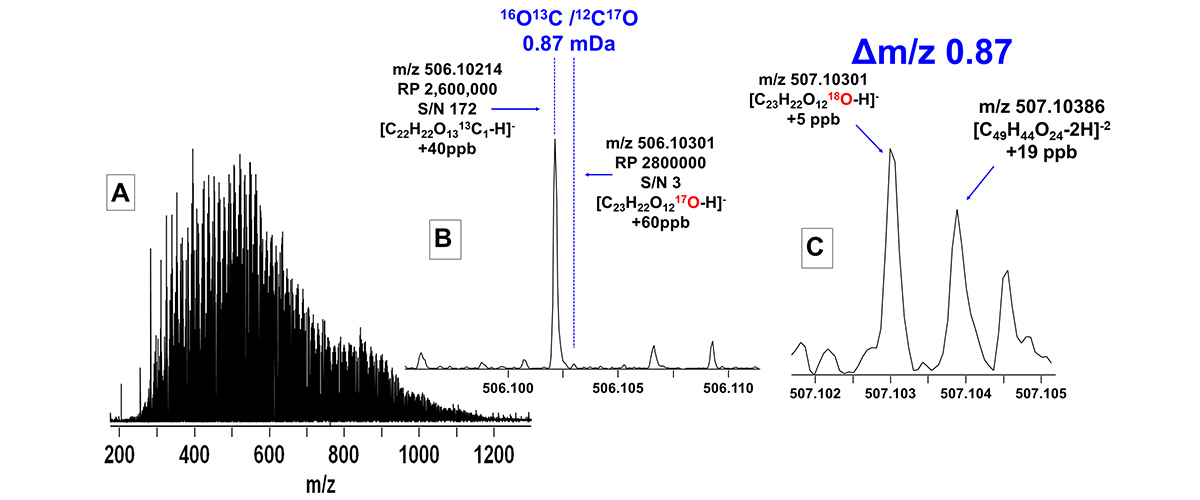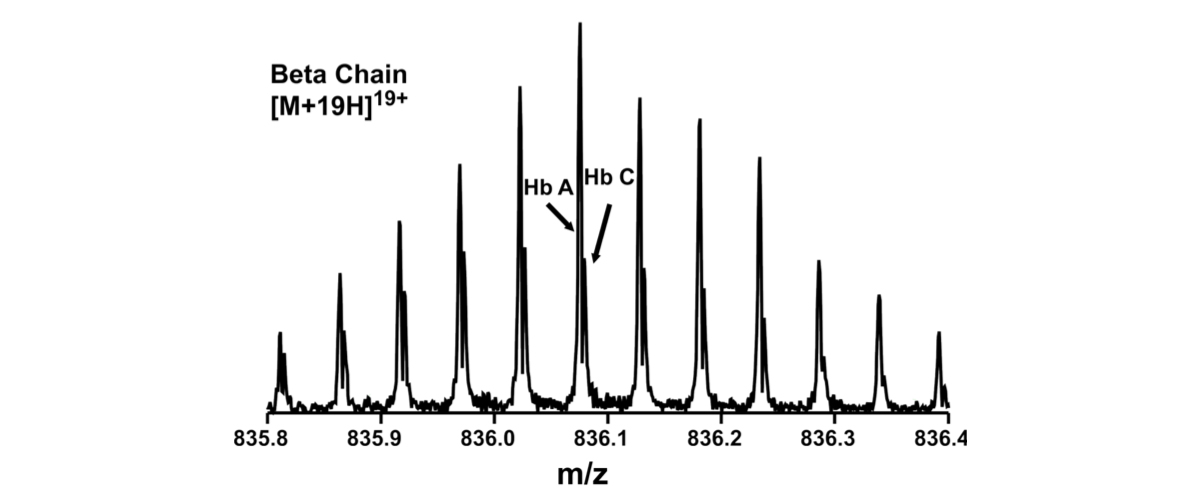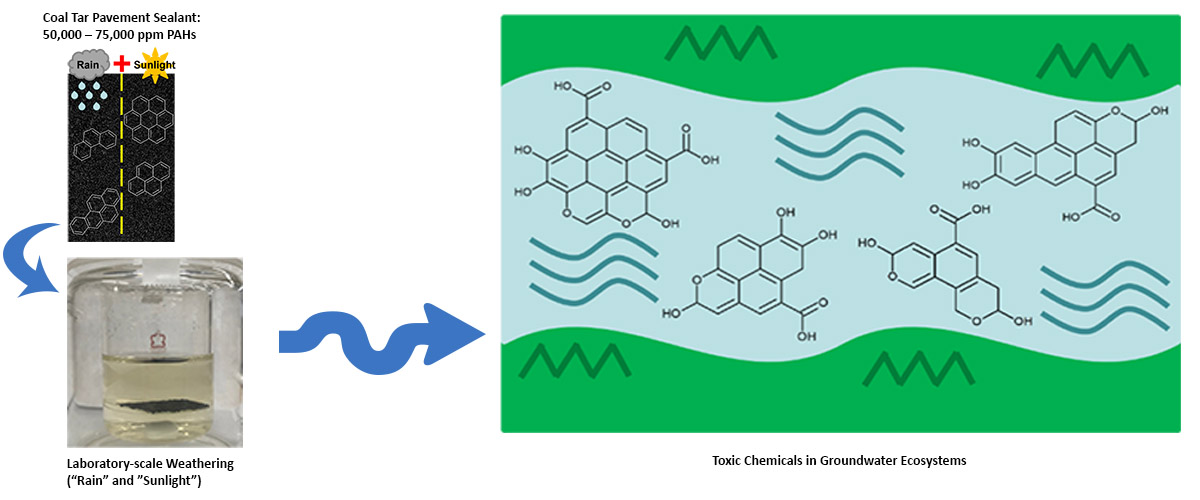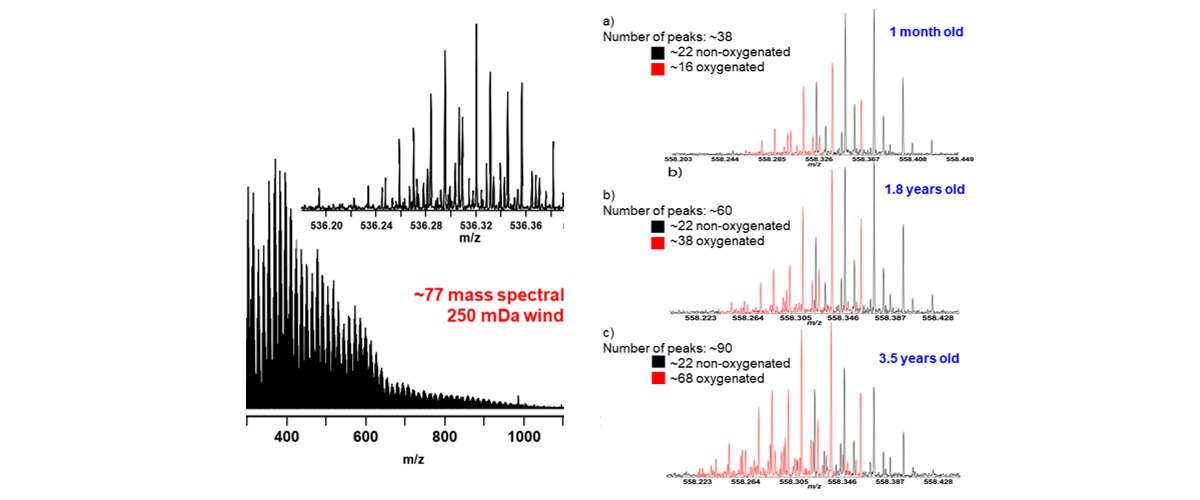What did scientists discover?
Natural organic matter is among the most complex of chemical mixtures on the planet. One single water sample can contain tens of thousands of natural organic matter molecules. Here, the 21 T FT-ICR mass spectrometer identified four times the number of species in a natural organic matter sample than lower magnetic field systems, providing a molecular catalogue to a widely-used standard reference material.
Why is this important?
Understanding natural organic matter's composition is important because it plays a key role in the global cycling of organic molecules and helps show how the environment is changing. Knowing the types of molecules present in complex chemical mixtures helps scientists better understand nutrient cycling, climate change, and sea level rise.
Natural organic matter is so complex that only advanced instrumentation like the MagLab’s 21T FT-ICR MS can separate the many discrete molecules in the mixture so each molecule can be identified.
Natural organic matter reference materials provide a way for researchers to compare various environmental observations to a known mixture. This sample of Suwanee River Fulvic Acid is one of the most widely used reference samples. With the implementation of FAIR data standards, this collaboration will provide a molecular catalog of Suwanee River Fulvic Acid to the global natural organic research community that can be compared to results from other mass analyzers and samples.
Who did the research?
William Bahureksa1, Thomas Borch1, Robert B. Young2, Chad R. Weisbrod3, Greg T. Blakney3, and Amy M. McKenna1,3
1Colorado State University; 2New Mexico State University; 3National MagLab
Why did they need the MagLab?
Identifying each individual compound of natural organic matter requires sensitive instrumentation to separate the small, discreet molecules from one another. The MagLab’s 21T FT-ICR MS is the best instrument in the world to successfully address and resolve the complexity of these highly complex mixtures.
The MagLab’s 21T FT-ICR mass analyzer is a one-of-a kind instrument that has been optimized to be the highest performing mass analyzer in the world. This “molecular microscope” is utilized by researchers worldwide as it is the only one of its kind in the world. Previous studies on the same sample by commercial instruments result in the identification of only a fraction of the species (~3000-4000 compounds) compared to 36,000 compounds identified using the 21T FT-ICR MS.
Details for scientists
- View or download the expert-level Science Highlight, Highest-Magnetic-Field Ion Cyclotron Resonance Reveals Hidden Complexity of Natural Organic Matter
- Read the full-length publication, Improved Dynamic Range, Resolving Power, and Sensitivity Achievable with FT-ICR Mass Spectrometry at 21 T Reveals the Hidden Complexity of Natural Organic Matter, in Analytical Chemistry, Data Set
Funding
This research was funded by the following grants: G.S. Boebinger (NSF DMR-1644779; DMR-2128556); T. Borch (NSF DEB-2114868; USDA AFRI No. 2021-67019-34608)
For more information, contact Chris Hendrickson.






